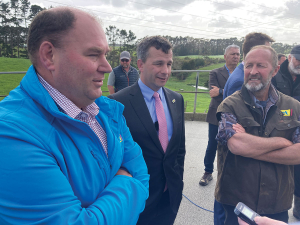Government intends to hold spending near current levels, with net new Government spending to 2016 totaling just $26.5 million.
Tax revenue is expected to increase by $1.36 billion over four years to the end of fiscal year 2016, with changes including tightening rules for deduction of the costs of assets, for example holiday homes and boats used by owners and renters.
Smokers are hardest hit with tobacco excise tax to rise by 10% each year for four years, increasing revenue by $528 million over the period.
Rebuilding in Christchurch, which is recovering from a series of devastating earthquakes, is still expected to cost the Government $5.5 billion before the end of fiscal 2016.
Treasury expects net Government debt in the forecast period to peak at 28.7% of gross domestic product in fiscal 2014, down from February’s forecast of a peak of 29.6% in the same period and below the Government’s objective of 30%.
Tax rates
No changes are being made to the existing key tax rates. The current key tax rates are as follows:
• GST – 15%
• Corporate tax rate – 28%
• Trustee tax rate – 33%
• Income tax rates for individuals are (see table 1):
This compares with the key tax rates in Australia, which are follows:
• GST – 10%
• Corporate tax rate – 30%
• Trustee tax rate – 45%
• Income tax rates for individuals are (see table 2):
Future Investment Fund
The Government expects to raise $5 - $7 billion from the partial sale of State Owned Enterprises (SOE) and Air New Zealand, and holding this amount as the Future Investment Fund. The Future Investment Fund will then invest the funds into new taxpayer assets over the next few years.
The first allocation of funding will be as follows:
• $88.1 million for the health sector, most of which will go towards hospital redevelopments;
• $250 million for KiwiRail’s turnaround plan;
• $76 million for capital cost of establishing the Advanced Technology Institute;
• $34 million to fit out schools with advanced broadband technology
The first of the four SOEs, Mighty River Power, is likely to be partially floated in the third quarter of 2012. The Government intends to maintain its majority shareholding of all the entities in the Mixed Ownership Model.
More money for the IRD
The Government has announced that the Inland Revenue Department will receive an extra $78.4 million over the next 4 years. This is to bolster its tax compliance activities in dealing with the “black” economy, debt recovery and following up unfiled returns.
Tax credit reform
The Government has removed a range of tax credits including the childcare and housekeeper tax credits, the under $9,880 tax credit as well as the tax credit for the active income of children.
These credits are no longer seen fit for purpose due to other initiatives such as working for families and the 20 hours per week childcare subsidy. The removal of these tax credits will save $117 million over the next four years.
Kiwisaver reform
The budget has provided a number of changes to KiwiSaver. In perhaps the biggest surprise in this year’s budget, the Government has put off plans to look at the automatic enrolment of workers into KiwiSaver.
The Government has deferred this until such time as there are sufficient surpluses to fund the estimated 4 year cost (which is approximately $514 million).
The employee minimum contribution to KiwiSaver will increase from 2% to 3% at 1 April, 2013. This is not surprising since it was announced in the 2011 Budget.
‘Mixed use’ assets
Changes to the tax treatment of “mixed use” assets (assets that are used both in business and privately) were foreshadowed in the 2011 Budget.
Examples of assets that commonly have a “mixed use” are holiday homes, boats and aircrafts.
The new rules will require “mixed use” assets owners to apportion their deductions based on the actual income earned and the private use of the asset.
For example, if a person rents out a holiday home for 30 days in a year and uses it personally for 30 days in a year, they will now be able to claim only 50% of the costs as a tax deduction (instead of the 90% they are currently allowed). This is forecast to generate an additional $109 million of tax revenue, over the next four years.
Student loan reform
Student loan repayments rates will increase from 10 cents to 12 cents for each dollar once income goes over $19,084 per year, effective from 1 April 2013. In addition, voluntary repayment bonus and student allowance for postgraduate study will no longer be offered.
Livestock valuation
Budget legislation will put the previously announced, livestock valuation restrictions into law. Restrictions will be placed on a farmer’s ability to switch between livestock valuation methods.
Previously farmers were able to switch between the two main livestock valuation methods to receive a tax advantage.
Effective from 18 August 2011, farmers will no longer be allowed to switch between the 2 alternative methods, except in narrow circumstances.
















